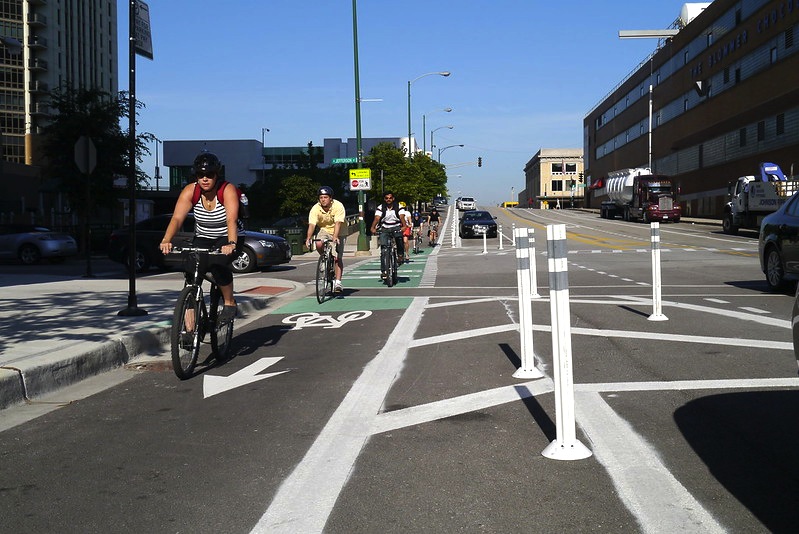• Flip Book • eNews • eAdventures • eCities • eCargoIntl • eBikeTypes • eRoad • eMTB • eUrban • eCargo • eBikeTests • eAccessories •
Cycling Cities on the Move – Chicago, Illinois
April 13, 2022 - In Sept. 2021, Chicago, with a population 2.71 million, announced its biggest bike lane expansion in the city’s history, with 160km of new and upgraded bike lanes planned by the end of 2022. A $17 million investment through Mayor Lori E. Lightfoot’s 5-year Chicago Works capital plan will fund the operation.

As part of the announcement, the Chicago Department of Transportation (CDOT) released a Community Cycling Network Update outlining the city’s initiatives. The goal is to have a 625-mile cycling network, as envisioned in the Chicago Bicycle Plan 2020. As of the end of 2021, the city boasts 397 miles of bikeways including 55 miles of off-street trails, and an on-street network of 342 miles, of which 35.2 miles are protected bike lanes.
Chicago has seen steady increases in bicycle commuting, from approximately 2,000 commuters back in 1980 to nearly 24,000 commuters in 2018, for a current cycling modal share of 1.8 percent.

Chicago also boasts 16,500 bike racks — which may be a record in the USA — along with 36 bike corrals that each park 10 bicycles.
In 2013, Chicago launched Divvy, a popular bike-share program that has seen over 7 million rides in the past two years. It set monthly records of over 800,000 riders in both July and August, and registered over 4 million rides in 2021, a new record as well.

The Active Transportation Alliance, a Chicago-based advocacy group working to create safe and equitable transit options, launched the city’s first bicycle map back in 1991.
In 2014, it initiated a Family Friendly Bikeways campaign and reported that cycling has roughly tripled, with 125,000 daily bike trips. Their current “Bikeways for All” campaign proposes 180 miles of new low-stress biking routes.
Chicago’s Streets for Cycling Plan, a blueprint to provide safe and comfortable cycling, includes bicycle accommodation within half a mile of every resident, a greater number of bikeways where more people live, and an increased amount of infrastructure to create a strong backbone of cycling mobility options.
Chicago has come a long way since the city’s first Bicycle Advisory Council was formed in 1991 followed by its first Bicycle Plan launched in 2000, and it looks destined to be a cycling leader in the USA.
Read more about the City of Chicago here and about its Dept. of Transportation (DOT) here.







